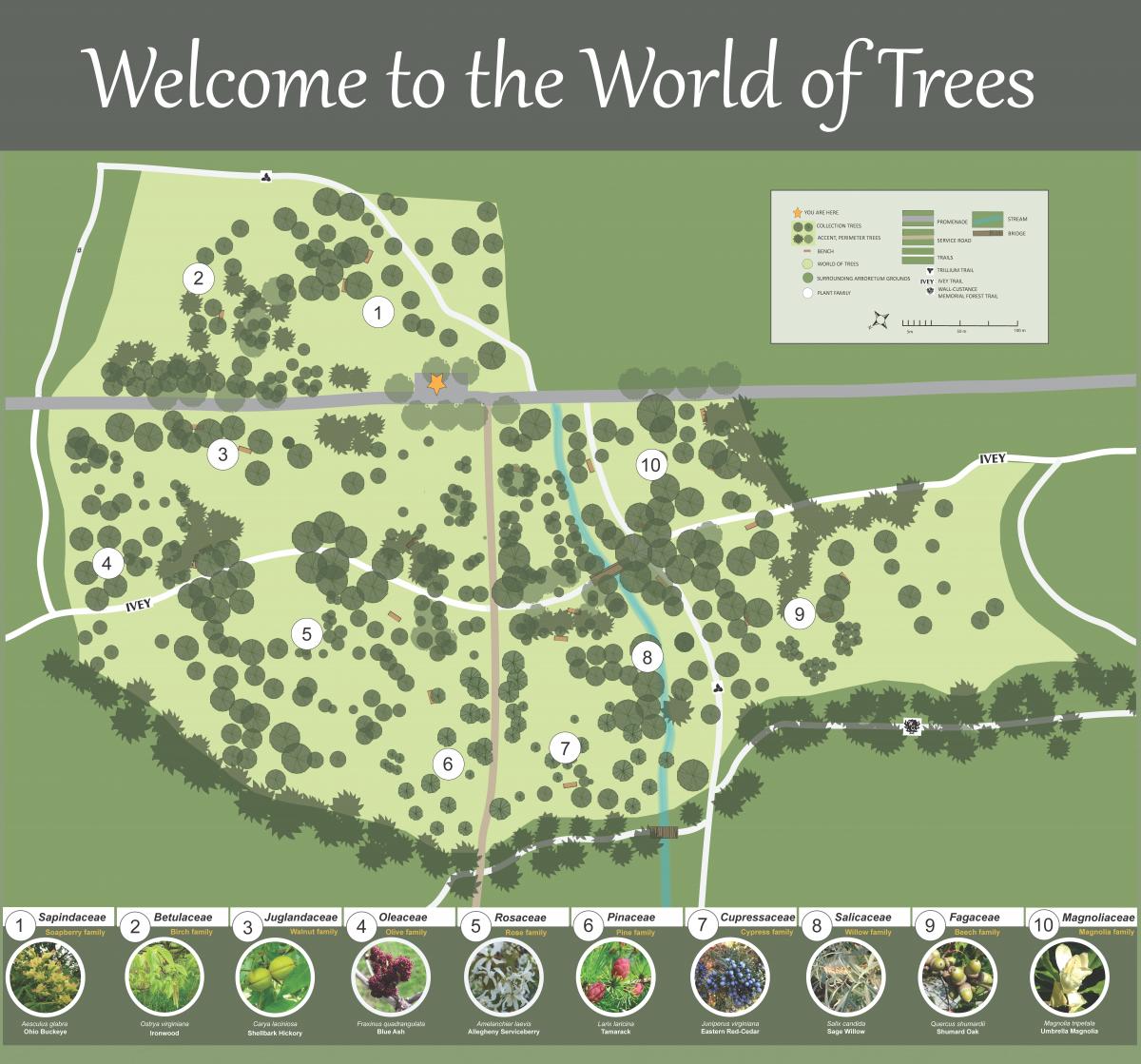World of Trees
Covering over six hectares in the heart of The Arboretum, the World of Trees is our largest collection, and it has a grand ambition: to display the widest sample and greatest diversity of living woody plants from across the globe, together in one space.
The world is vast and filled with extreme landscapes --briny lakes, arid steppes, humid gorges—and plant physiology and chemistry can evolve to thrive within the conditions of very niche habitats.
Guelph is in the mixed hardwood ecotone, where we face our own environmental extremes: an extremely basic soil, formed from calcium-rich limestone, humid and sweltering highs in summer, frigid winter plunges, and increasingly unpredictable shifts between. Although these factors limit the scope of what can be grown, the aim is to celebrate the incredibly variety of what remains possible, including representatives from over sixty plant families.
The collection you visit today was once open agricultural fields. To define the space, hedgerows and naturalized buffers were planted as edges, and accent plants were used to outline paths, offer shelter from wind, shade from sun, and sometimes to physically support vines and climbing specimens.
Each specimen is a dynamic living being, growing as an example of a naturally occurring taxa that exists in the wild. It is introduced by a label, letting you know its name, the context of where it comes from, and the plant family it belongs within. Most taxa are planted together by family. This makes it easy to compare species and see traits that make them distinct, while also noticing features that they share as relatives. The location of a plant is also influenced by the habitat and microclimate that would best suit it, matching taxa to their optimal environment.


The obvious first impression for most guests is the physical reality of these plants. Their height, shape, scent, flowers, bark texture, or leaf colour can all easily capture the imagination and demand our attention. Aesthetics, and creating a pleasing and varied landscape, is our final consideration in choosing where to plant new specimens.
Centrally located, the World of Trees is traversed by all our main trails. The boundaries of the collection are essentially where the mowing stops. You are welcome –even encouraged- to get off the trails, explore, and find your own route.
If you prefer some guidance, keep an eye out for the Be Aware of the Rare plaques, which highlight species at risk in Ontario, and use these to lead you on a curated walk. A World of Trees sign is located along the pedestrian Promenade. This sign includes facts and details about the collection, maps to help you orient within the collection (and the Arboretum as a whole), and explains how to read a label. The explorer website also allows you to search by collection or by plant name, if you want to find specific plants to visit.
Reward your curiosity and find your place in the world of woody plants.
